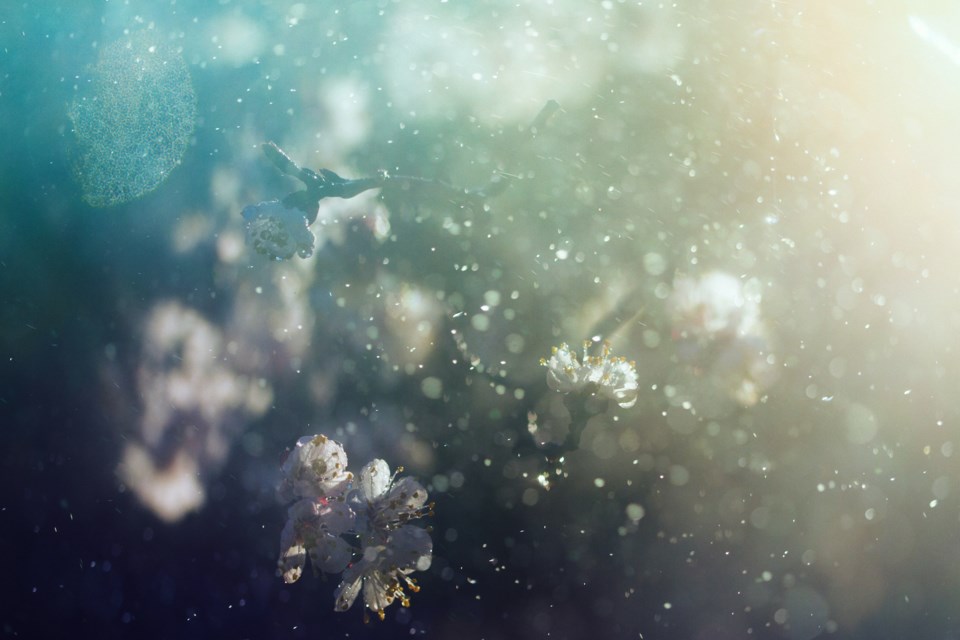Have you noticed that your seasonal allergies are not kicking in as early as usual?
The folks at , which monitors daily outdoor pollen and fungal spore levels — allergens, in other words — say that this is an atypical start to allergy season.
The company has stations across Canada, including four stations that collect pollen and spore samples in С����Ƶ — located in Victoria, Vancouver, Burnaby and Kelowna.
Its data is used on sites like for pollen reports and allergy outlooks.
Pollen levels have been very low so far, said Daniel Coates, director of the company.
For example, cedar samples have been very low.
Checking the Burnaby station, he said last year, there were 1,389 grains of cedar in a daily sample taken in the first week of March. This year, for the same week, there were about 40. Samples for hazel, poplar and Elm were also really low — 100 or less.
Usually, high pollen levels would have started for our region in mid to late February.
The company is now predicting a later start to the pollen season across Canada.
Coates noted that allergies are very personal, so the amount of pollen doesn't necessarily equate to what you feel.
"Some will react to moderate levels; some will react at high," he said.
At really high levels of pollen in the air, some folks who don't usually experience allergies may be impacted.
"Sometimes, you get into 2,000 grains — it doesn't happen often, but it does sometimes — in one day, and even people like myself who don't have allergies will quite often feel that," he said.
Achoo!
Laboratory technician for the company , said when it does warm up, there will be a mini-pollen explosion of sorts.
"When it does finally warm up, some of these trees have been kind of holding their pollen and waiting, it seems, and so then they'll release a lot all at once. And so, I would expect to see a bunch of really high levels.”
There is no "skipping" the pollen season. If it stays cool longer, that will just shift the season to be later, she said, adding that the higher counts would be seen in alder and cedar first.
"Those are the first pollen that really start to elevate," she said. "Birch, which is also very important pollen, is a little bit later. That's [usually] the end of March or early April in the Vancouver area."
Alder has a very long season in our region.
"It normally is only a few weeks in most other locations, but in Vancouver, alder season lasts for like two months," she said.
What is a spore?
Fungal spores are very important in terms of allergies, as well, and are often in higher concentrations than pollen.
Spores are a big problem for many people, but they don't often know what is bothering them, Jurgens said.
According to Aerobiology Research Laboratories data, these spores are also low so far this year.
But what the heck are airborne fungal spores, and how are they different from pollen?
Fungal spores are found in outdoor moulds under dead leaves, soil, trees, and the like.
There is what is sometimes called “snow mould,” which is seen on lawns after snow melts.
Pollen is like the male reproductive part of the tree — like tree sperm, Jurgens explained.
Fungal spores, on the other hand, reproduce asexually.
"It's basically the piece that comes off [the fungus] that then will travel somewhere else and make new fungus,” she said.








